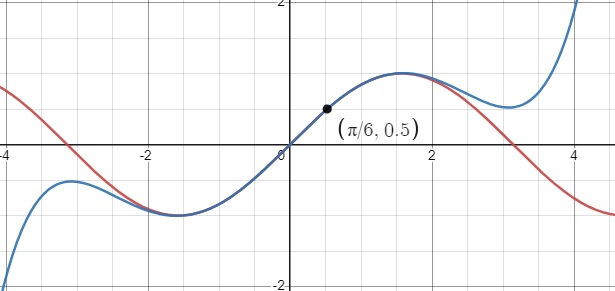For several years now, I’ve been posting a series of notes on reviewing for the AP Calculus Exams. The questions on the AP Calculus exams, both multiple-choice and free response, fall into ten types. I’ve published posts on each. The ten types have not changed over the years, so there is not much to add. They are updated from time to time. The posts may be found under the “Blog Guide” tab above: click on AP Exam Review. The same links are below with a brief explanation of each.
This year’s AP Calculus exams will be given on Monday May 13, 2024, at 8:00 am local time.
I hope these will help as you, teachers and students, to review for this year’s exam.
General information and suggestions for teachers
- AP Exam Review – Suggestions, hints, information, and other resources for reviewing. How to get started. What to tell your students. Simulated (mock) exams.
- To dx or not to dx – Yes, use past exams and the scoring guideline to review, but don’t worry about the fine points of scoring; be more stringent than the readers.
- Practice Exams – A Modest Proposal Like it or not (and the AP folks certainly do not) the answers are all online. What to do about that. Don’t overlook the replies at the end of this post.
General Information for students
Why Review? To make mistakes!
How, not only to survive, but to Prevail… Things students should know to do well on the exams. Copy this article for your students or share the link with them.
The Ten Type Questions.
Other than simply finding a limit, a derivative, an antiderivative, or evaluating a definite integral, the AP Calculus exam questions fall into these ten types. These are different from the ten units in the CED. Students are often expected to use knowledge from more than one AP Calculus unit in a single question.
These posts outline what each type of question covers and what students should be able to do. They include references to good questions, free-response and multiple-choice, and links to other posts on the topic.
These ten types appear in multiple-choice and free response questions. This type analysis provides an index to the questions by type. In addition the multiple-choice questions include straightforward questions (find a limit, compute a derivative, etc.)
Type 1 questions – Rate and accumulation questions. Contextual questions about things that are changing. Careful reading is the first step. Good graphing calculator skills are essential since this is usually a calculator active question.
- Type 3 questions – Graph analysis. Given the derivative often as a graph, students must answer questions about the function – extreme values, increasing, decreasing, concavity, etc.
- Type 4 questions – Area and volume problems. Student must find the area of a region enclosed by one or more curves, find the volume of a solid with regular cross-sections, and/or find the volume of a solid of revolution (which is, of course, a regular cross-section).
- Type 5 questions – Riemann Sum & Table Problems. Starting with a short table of values of a function, and/or its derivative students are required to find Riemann sums and other information about the function often in a contextual situation.
- Type 6 questions – Differential equations. Students are asked to solve a first-order separable differential equation, work with a slope field, or other related ideas. BC students may be asked to use Euler’s Method to approximate a value and discuss the logistic equation.
- Type 7 questions – Miscellaneous. These include finding the first and second derivative of implicitly defined relation, solving a related rate problem or other topics not included in the other types.
- Type 10 questions – Sequences and Series (BC topic) Questions ask student to determine the convergence of series using various convergence tests and to write and work with a Taylor and Maclaurin series, find its radius and interval of convergence.
The notes always available from the menu line at the top of the page: click on Blog Guide > AP Exam Review
Also, Calc-Medic has posted a searchable database of all the AP Calculus Free-response questions from 1998 on. The link is here. While you’re there take a look at their website which has lots of resources and free lesson plans. For more on Calc-medic see this post.
Updates: March 9, 2023 – Calc-medic, March 2, 2024


